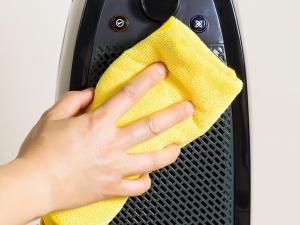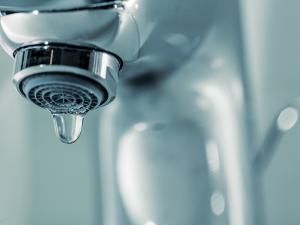
Main navigation
Did you know that the EPA Science Advisory Board rated indoor air pollutants as the third highest in its list of environmental risks?
In order to protect the safety and health of you and your family, Pippin Brothers recommends regular air quality testing and monitoring in your Lawton area home. This should be followed by the appropriate maintenance to continue breathing fresh, clean and healthy air. Our customers rely on us to provide the services needed to maintain a comfortable living environment.
Problems We Solve With Air Testing:
- Learn more about the air quality of your home
- Prevent health risks from carbon monoxide and other pollutants
- See where energy is leaking in and out of the home
Air Quality Maintenance Provided by Pippin Brothers Includes:
- Infrared Duct Inspection
- Air Quality Testing & Monitoring
- Duct Cleaning, Sealing, Repair & Modification
- Air Quality Device Repair
Improve Your Oklahoma Home’s Air Quality
The majority of our time is spent indoors, yet we tend to worry more about outdoor air in terms of pollutants. This is a vital and shocking misunderstanding.
Even in larger industrial cities, the U.S. Environmental Protection Agency (EPA) has found that air inside our homes can be more polluted than outdoor air. Regardless of your cleanliness, there are pollutants lurking in your quarters – oil, gas, wood, furnishings, damp carpet and even household cleaners can be damaging the air you and your family breathe.
Fortunately, you can improve your home’s air quality and protect the health of yourself, your family and your pets. Using cutting-edge technology, Pippin Brothers performs air quality testing and monitoring to pinpoint culprits of pollution and stop problems at their source. You’ll feel safe knowing the air inside your home is clean, pure and healthy.
Carbon Monoxide – A Risk You Can’t Afford To Ignore
You can’t see or smell carbon monoxide, but at high levels it can kill a person in minutes. Carbon monoxide (CO) is produced whenever any fuel such as gas, oil, kerosene, wood, or charcoal is burned.
If appliances that burn fuel are maintained and used properly, the amount of CO produced is usually not hazardous. However, if appliances are not working properly or are used incorrectly, dangerous levels of CO can result.
Don’t ignore the risks. Get a safety check for carbon monoxide in your home or office by a Pippin Brothers technician.
FAQ On Carbon Monoxide Air Monitors
What should I do if my CO monitor goes off?
Call your CO-certified contractor at any level below 70 ppm, unless you have symptoms. CO exposure can cause nausea, severe headache, shortness of breath, chest pain, blurred vision, and dizziness. If you experience these symptoms call 911 and leave the house immediately. Above 70 ppm, evacuate immediately. If you have symptoms, call 911 from a neighbor’s house. Call your utility to turn off the equipment until your CO-certified contractor can investigate the source of carbon monoxide.
Where should I place the NSI monitor?
CO is lighter than air. Monitors should be mounted at eye level and no lower. They should be placed in an area with good air circulation. If you have only one monitor, place it near the master bedroom. Additional locations include your kitchen, nursery, basement, rooms with fireplaces or gas logs, and near your heating system and/or hot water tank. Your professional installation contractor will determine the best location in your home.
How many monitors should I have in my home?
As with smoke detectors, you should have one monitor installed on every level of your home. Even a single story home may need two – one at each end.
Why is the NSI 3000 more expensive than the others?
Accurate, low-level CO detection requires more expensive components & quality control. The NSI 3000 CO monitor uses the same technology and sensors as in professional-grade CO analyzers used by contractors, fire departments, and utilities. And NSI’s unique Continuous Scan™ mode lets you know the monitor is operational 24/7!
What about the other “detectors” sold at retailers and home centers?
Store-bought detectors don’t alarm until unsafe levels of 70 ppm or higher are present at the unit for 3-1/2 hours! By then it may be too late. Plug-in models don’t always allow for proper placement and don’t work during power outages. The NSI 3000 is battery powered for 24/7 protection.
Why do I need a low-level monitor?
The NSI low-level monitor senses CO levels as low as 5 ppm (parts per million). Infants, children, elderly, persons with respiratory or heart ailments are provided little or no protection from deadly CO with standard alarms. Long-term exposure to Low-level CO above 15 ppm can cause illness and even permanent disabilities.


